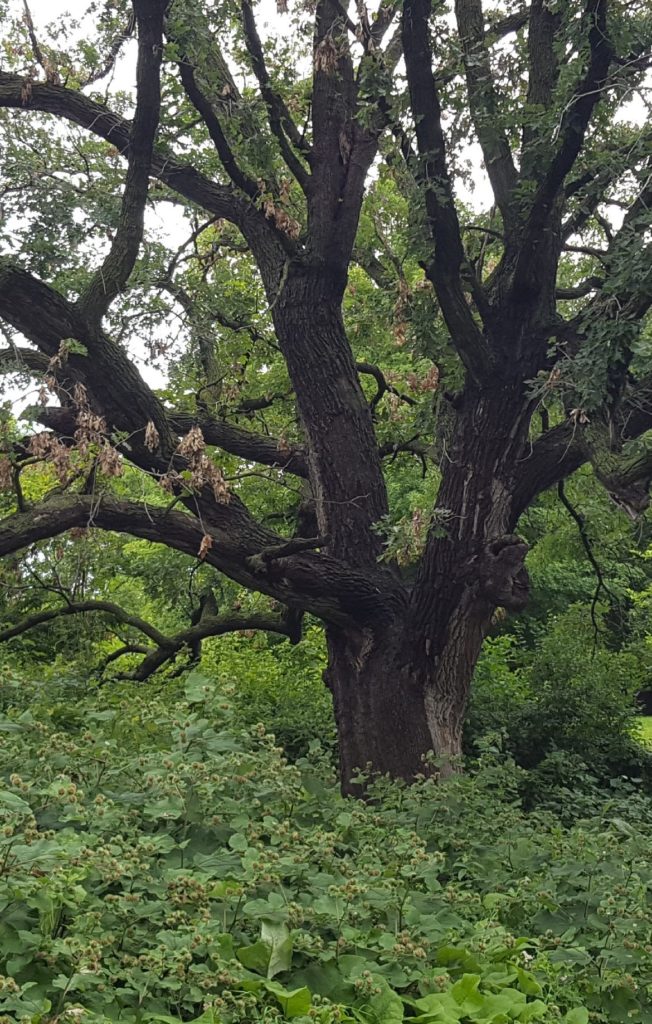
This tree, in a Bloomington Park, is 38″ dbh, in Hawick sand-gravel loams. The above ground structure, in these soils, can easily be 300 – 500 years old. Despite the good intentions of the land managers, to not disturb the oak via mowing, the vegetation was left unharvested, a novel disturbance for the past 30 million years of oak evolution. The unharvested vegetation including years of oak leaf, stem, and fruit deposition, has created a toxic over-enriched (nitrogen) soil that fuels undesirable vegetation, including species that reinforce high nitrogen loads, are non-edible to toxic (collapse food webs), and drive general declines in ecological integrity. In this case, excessive soil N has fueled burdock, motherwort, and garlic mustard. High humidity created by the unharvested, non-edible vegetation allows perfect breeding grounds for fungal-bacterial disease (sudden oak death). The index along the this tree’s trunk is stressful to lethal to the oak’s crown.
Oaks, like many modern trees (e.g. aspen) are grassland trees, not forest. Grassland trees evolved with mega herbivores, that in the heat of summer days sought refuge in the shade of oak groves and openings, whereby they grazed the grasses into lawns. In fact, the word lawn came from this form of disturbance, which in turn became a plant community onto itself, dominated by graze obligate vegetation, and the most powerful terrestrial ecosystem ever: Grazing Lawns, a completely unrecognized plant community to North American phyto-centric ecologist.
Oaks are grassland trees, that emerged with grasslands and grazers, and are dependent upon that form of disturbance. This amazing tree is suffering and dying from our poor scientific understanding of oak ecology. Once again, the worst thing we can do in the majority of our land management is nothing.